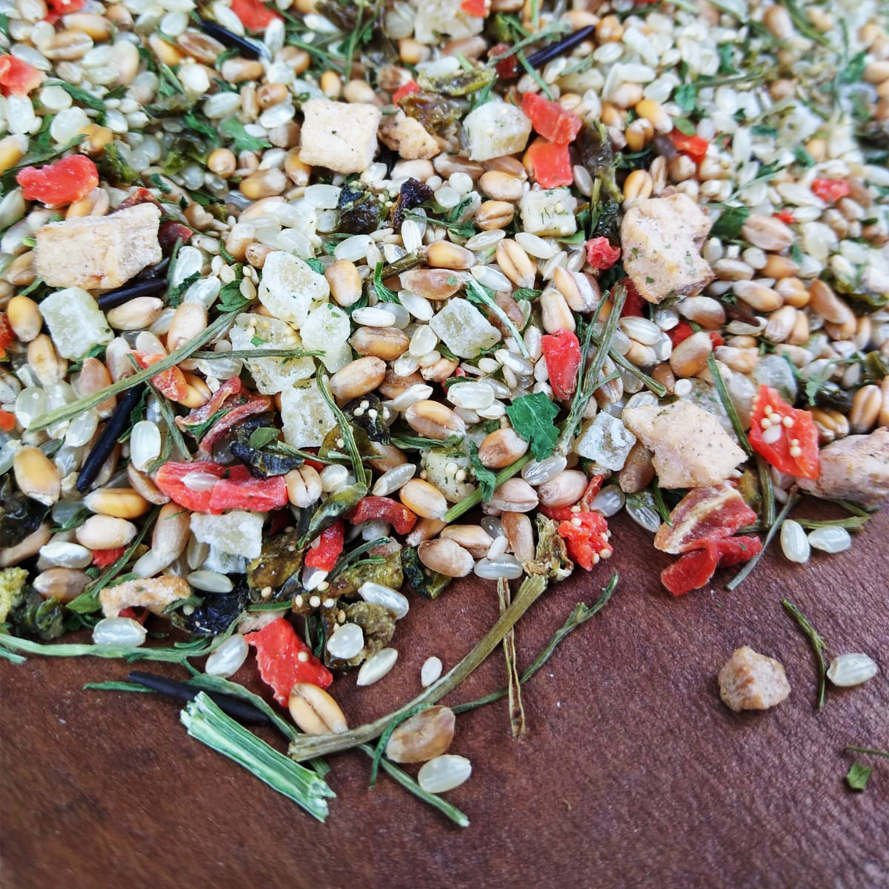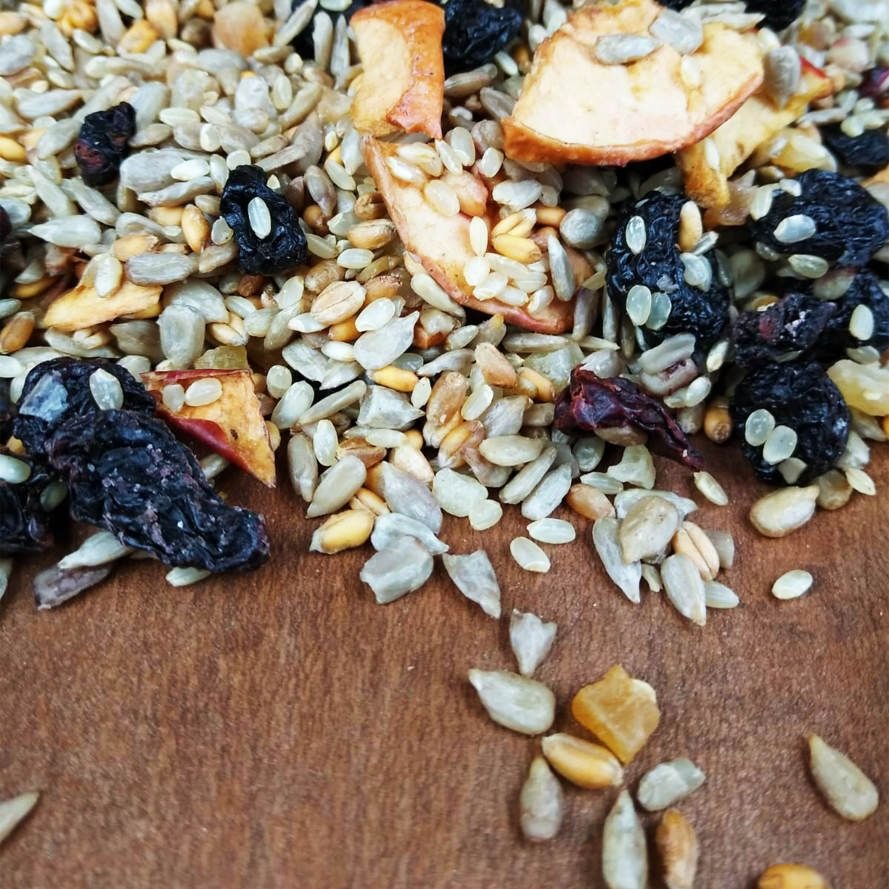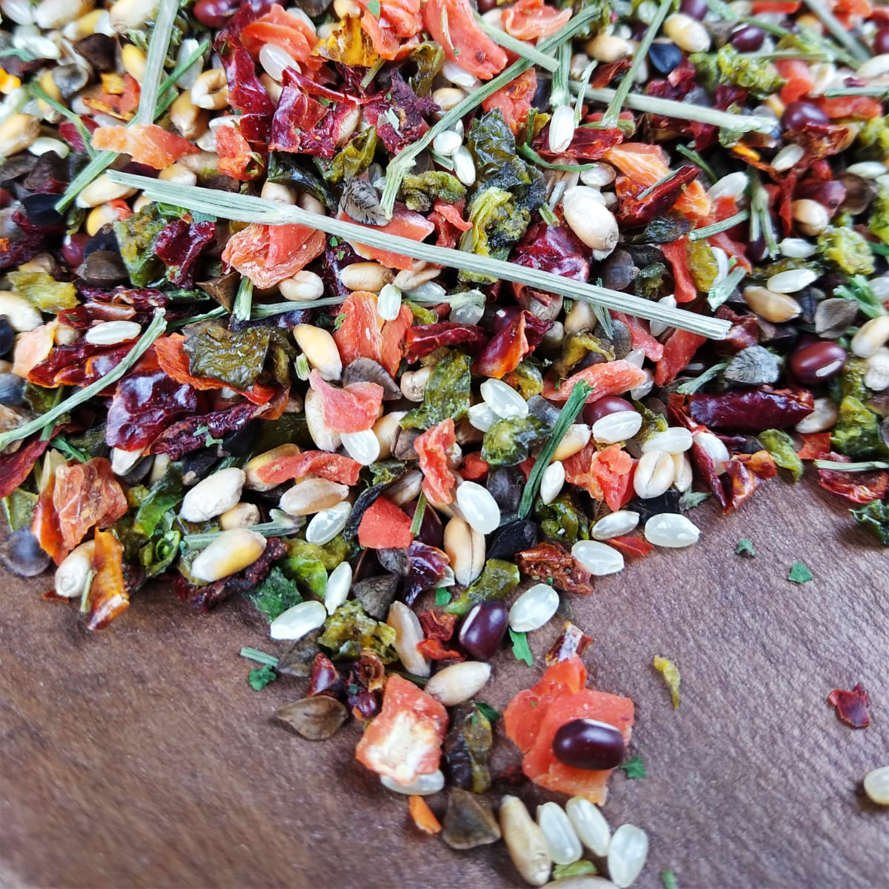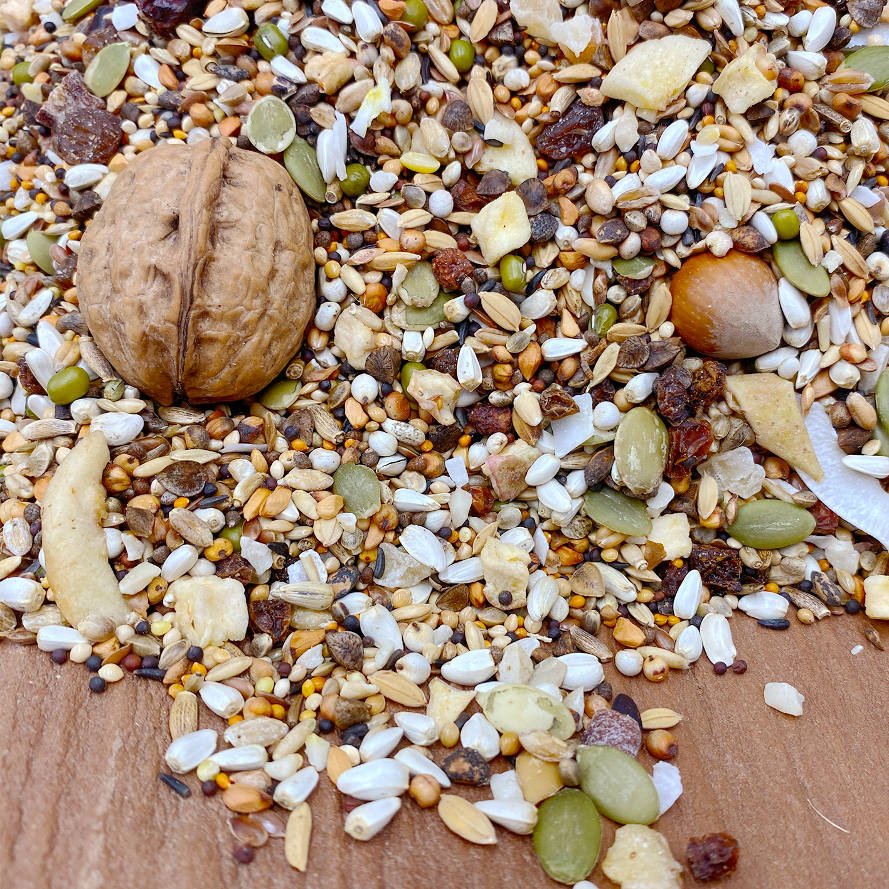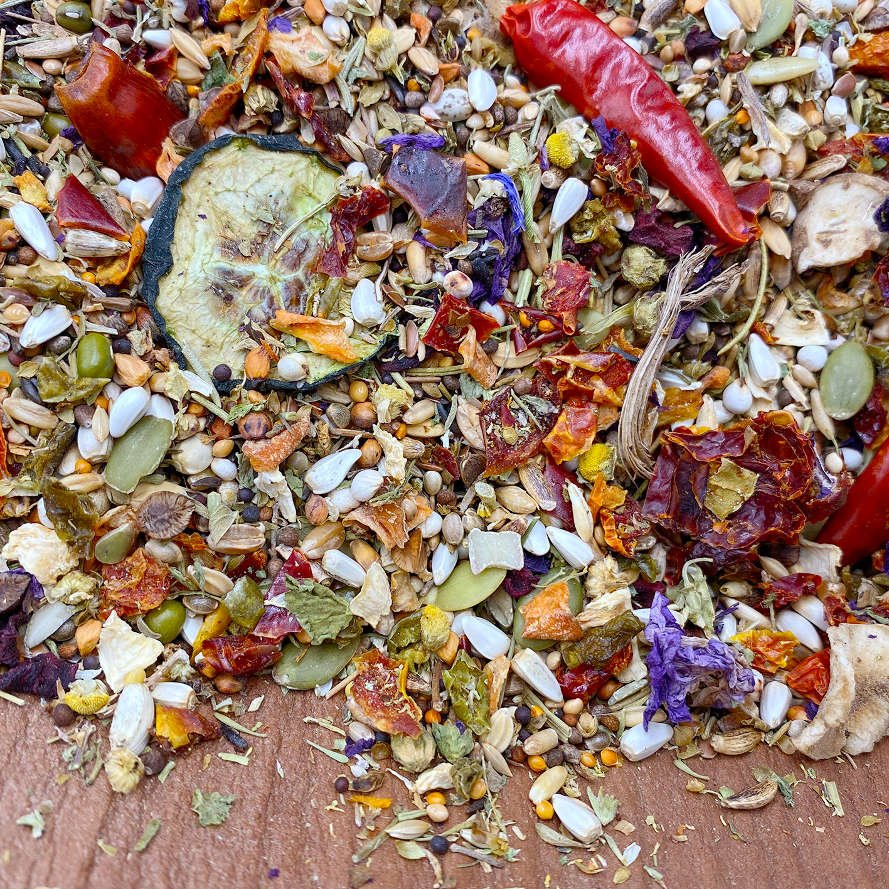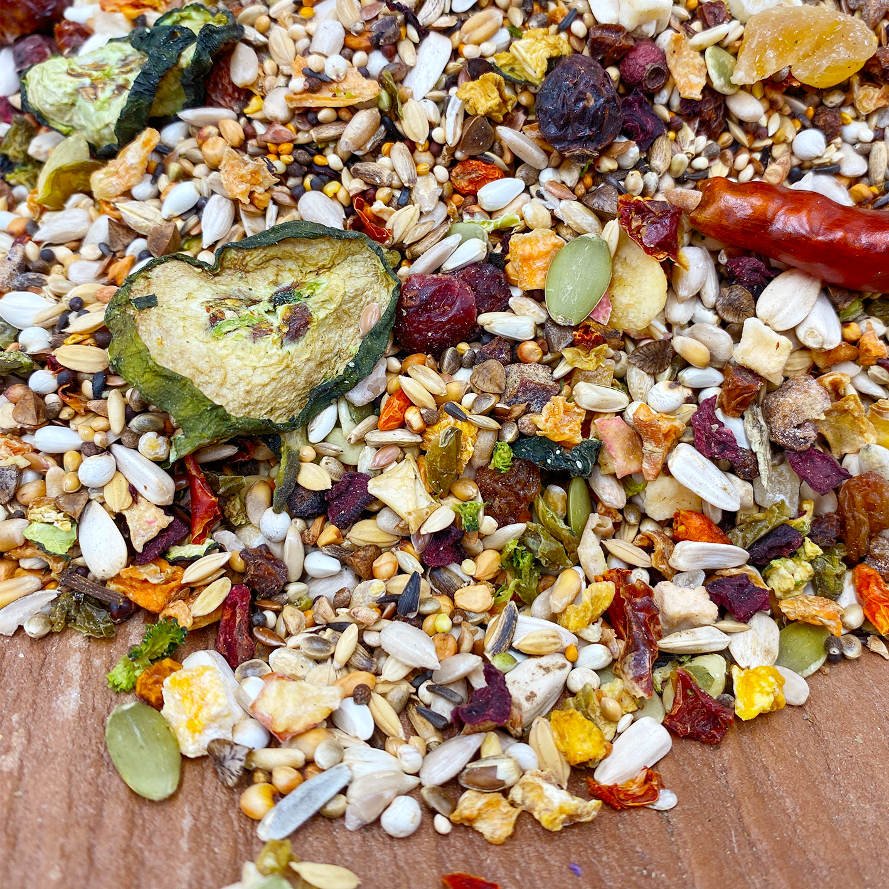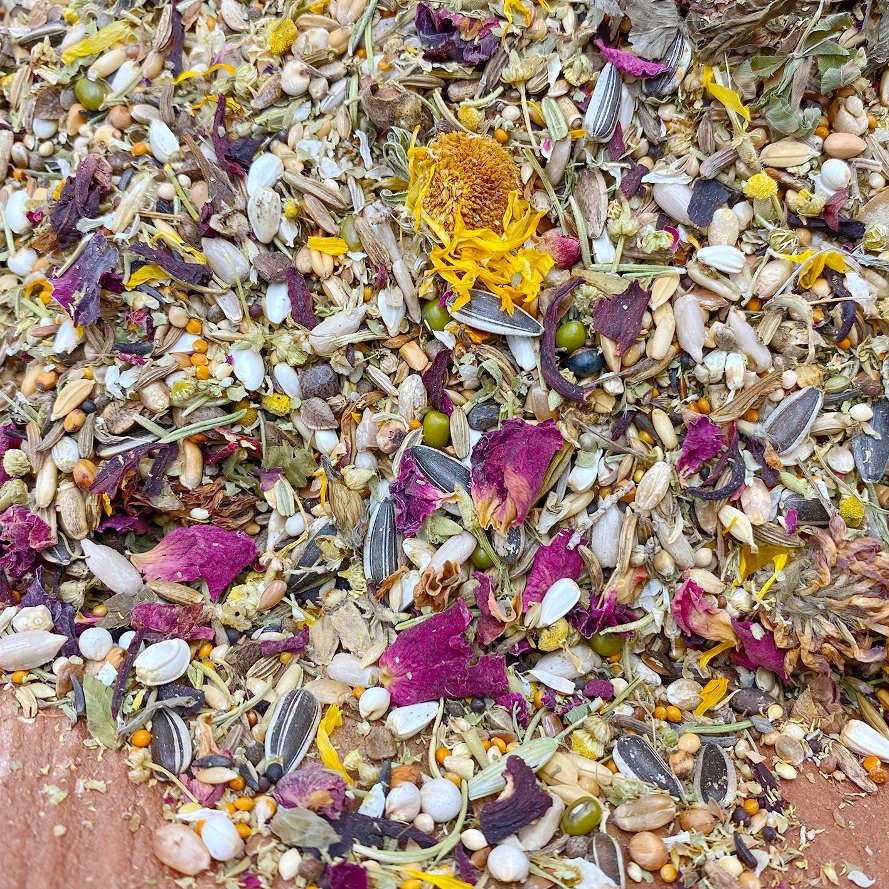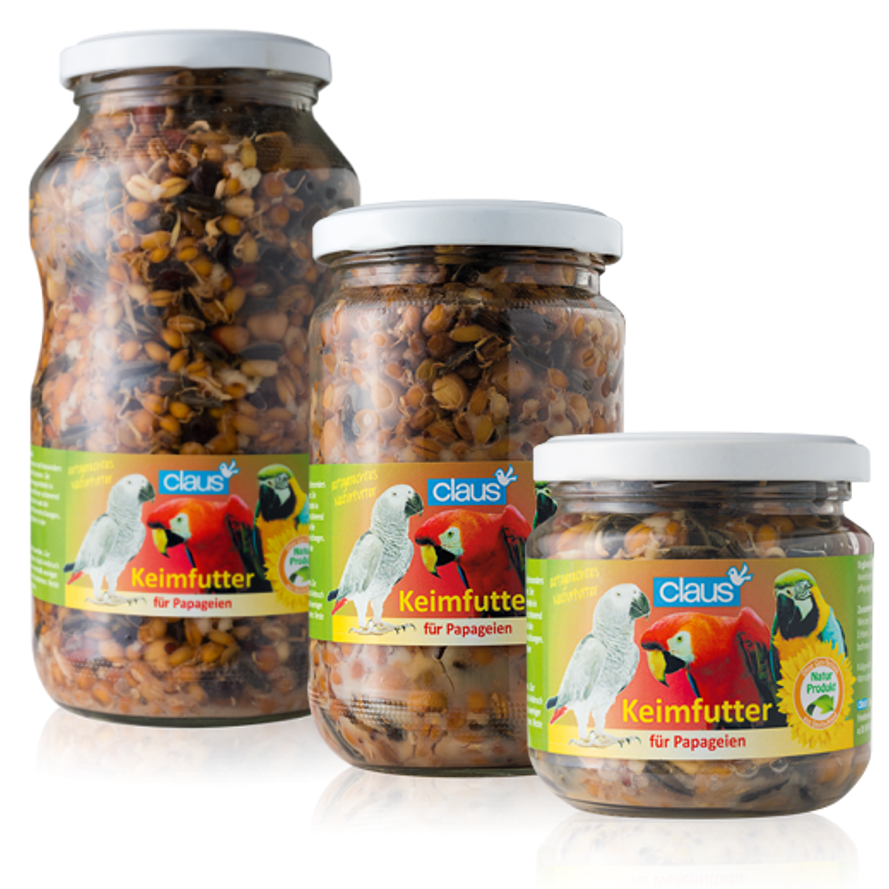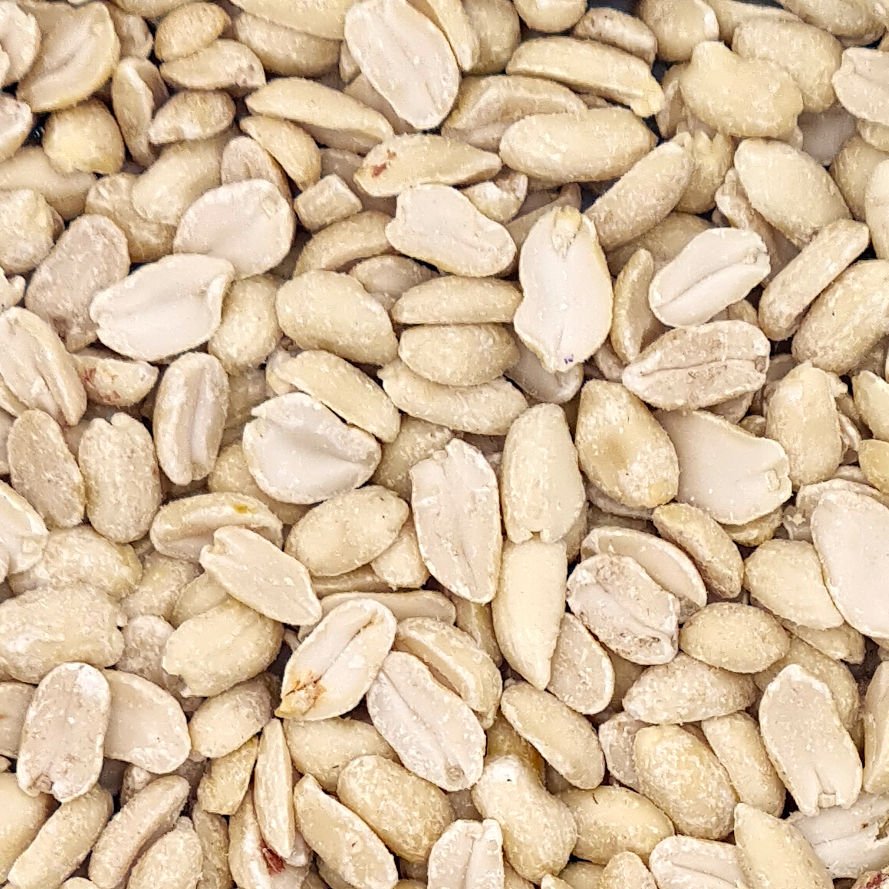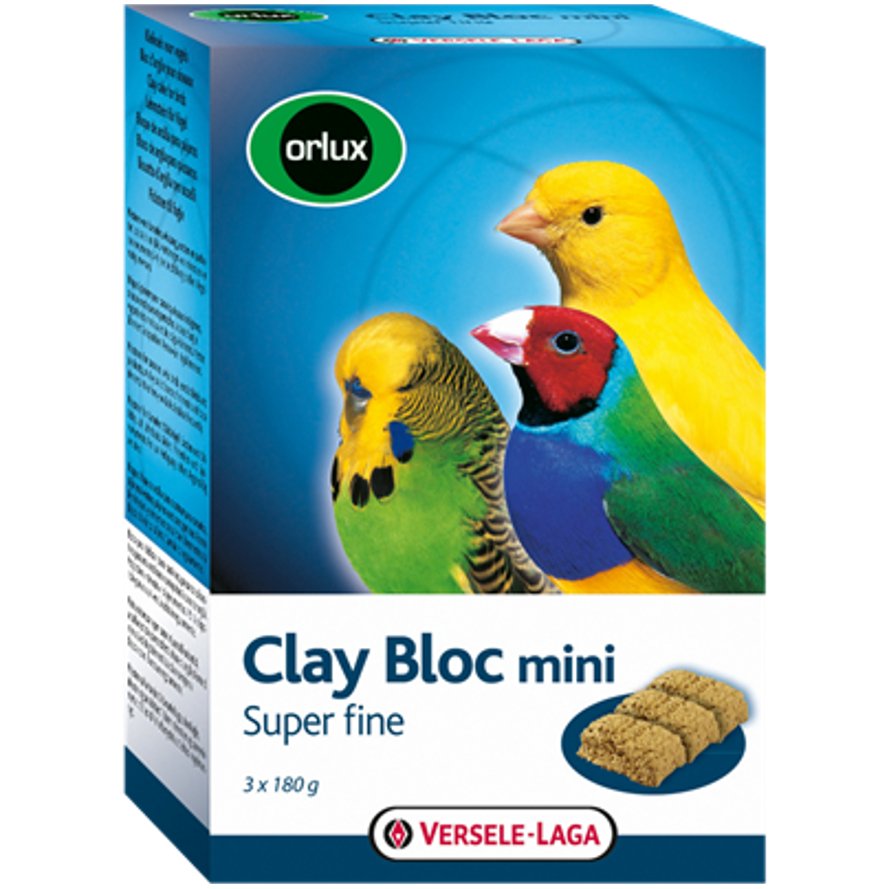
Healthy food for grey parrots
Hey you! Welcome to Mixerama - the shop for healthy and natural food especially for gray parrots. With us you will find a hand-picked selection of high-quality feed mixtures that are specially tailored to the needs of your feathered friend. Spoil your gray parrot with healthy and nutritious feed mixtures that support its health and vitality. Order today and do something good for your parrot!- balanced ratio between fruit and vegetables
- satiating
Content: 0.5 kg (€9.00* / 1 kg )
- Fruit & rice for large parakeets & parrots
- filling
Content: 0.5 kg (€9.00* / 1 kg )
- Cooked food with vegetables based on wheat & rice
- for large parakeets & parrots
- satiating
Content: 0.5 kg (€9.00* / 1 kg )
- With 9 different flowers from natural medicine
- Flowers can also be used for tea
Content: 0.1 kg (€45.00* / 1 kg )
- for outdoor husbandry and in case of illness
- many peeled seeds and kernels
- with many fruits and nuts in food quality
- without sunflower seeds
- contains low-sugar and low-fat vegetables
- with healthy herbs and flowers
- Improved recipe of the Health Extra
- High-quality herbal seeds known from herbal medicine
Content: 0.5 kg (€20.00* / 1 kg )
- Food suitable for all large parrots
- Basis for own creations
- Premium food with fruits, berries and vegetables
- for Macaws, Cockatoos & Grey Parrots
- many healthy herbs and flowers
- suitable for macaws, cockatoos, grey parrots and other large parrots
- different healthy nut varieties
- can be used as a main and supplementary feed
- as a food supplement or tea
- suitable for all parakeets and parrots
Content: 0.5 kg (€22.00* / 1 kg )
- ready-to-use sprouted food for large parrots
- important nutrients, minerals and vitamins
Content: 0.21 Liter (€21.86* / 1 Liter )
- as an extra portion of vitamins, for feeding or as a treat
- made from 100% natural fruit, berries and vegetables
Content: 0.5 kg (€22.00* / 1 kg )
Darüber freut sich dein Liebling...
The history of the gray parrot
The gray parrot as a pet
Diet of the gray parrot
Fruits and vegetables in fresh form, as well as nibbles and minerals make up the rest. A good tip is to pass cottage cheese during the moult. Chocolate, chips or the like is absolutely taboo. Whether a parrot remains in good health depends on them and the diet.
Grey parrot health problems
How to train a gray parrot
- The basic thing is to rebuild trust. This can be achieved by spending more time with the animal. Start to slowly pass fruit and vegetables through the grille and talk to him. If the gray parrot then comes to meet without food, a lot is already done.
- Now it's time for training outside the cage. Put the pet food next to the cage and go to the other end of the room. If he comes out on his own, that's the next step.
- Put a stand, a branch, in the room. If your gray settles on it, it is a good sign. The stand will soon become a safe place and the bird will stay there longer. Now it's time for the next step.
- Accustom the parrot to the hand. Again, this works best with fruit or vegetables. Let him climb on your finger and practice it min. 20 minutes a day. The most important thing is calmness, love for the animal and compassion. If you can then lead your animal by the hand, you are a unit and you will have a happy bird.

